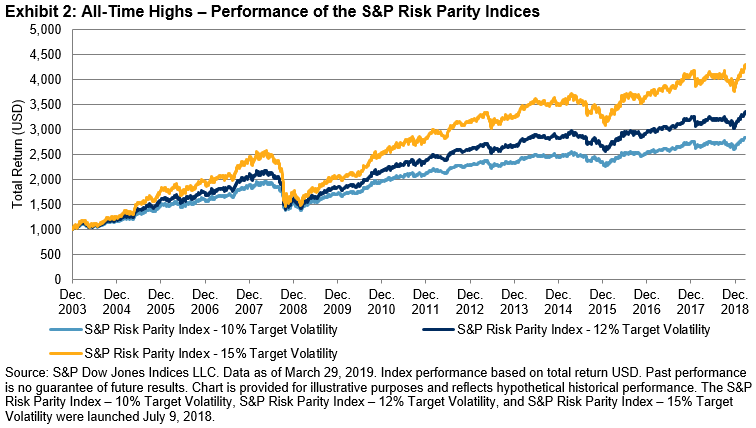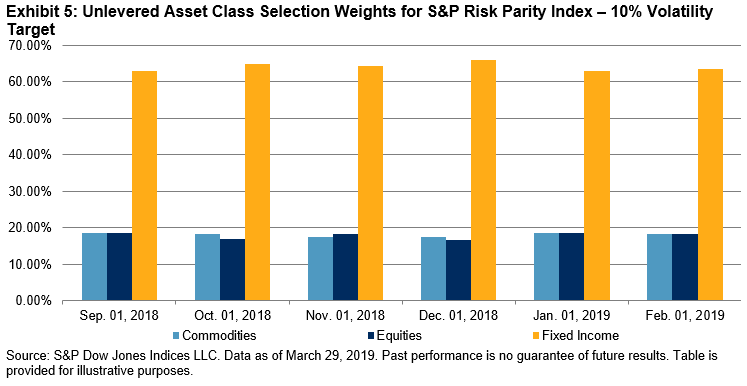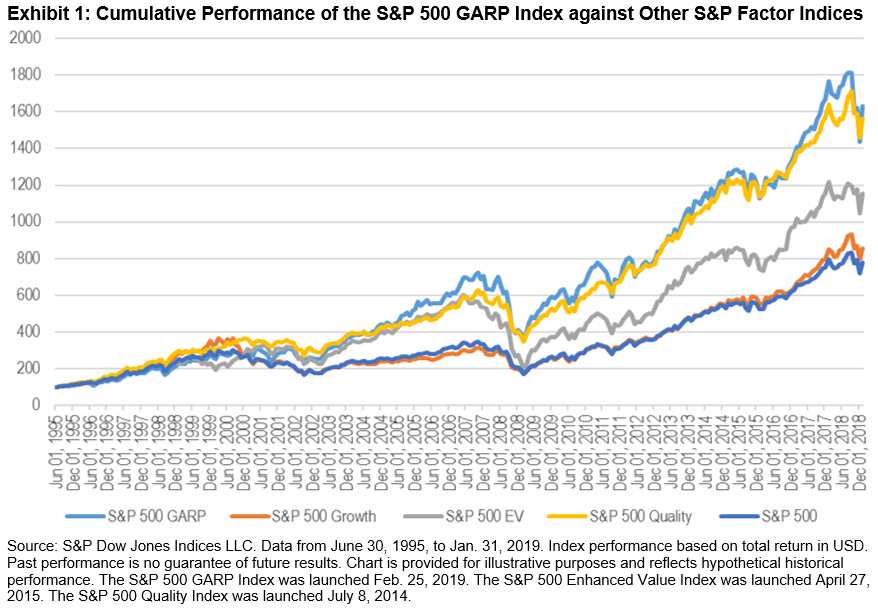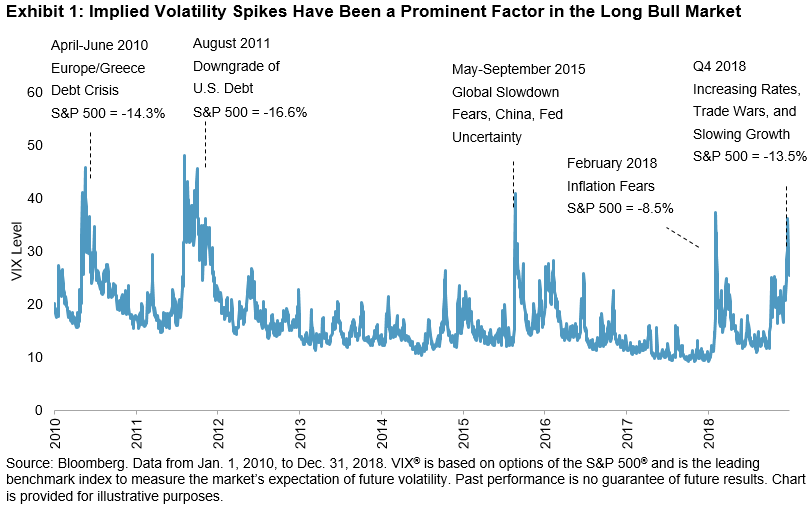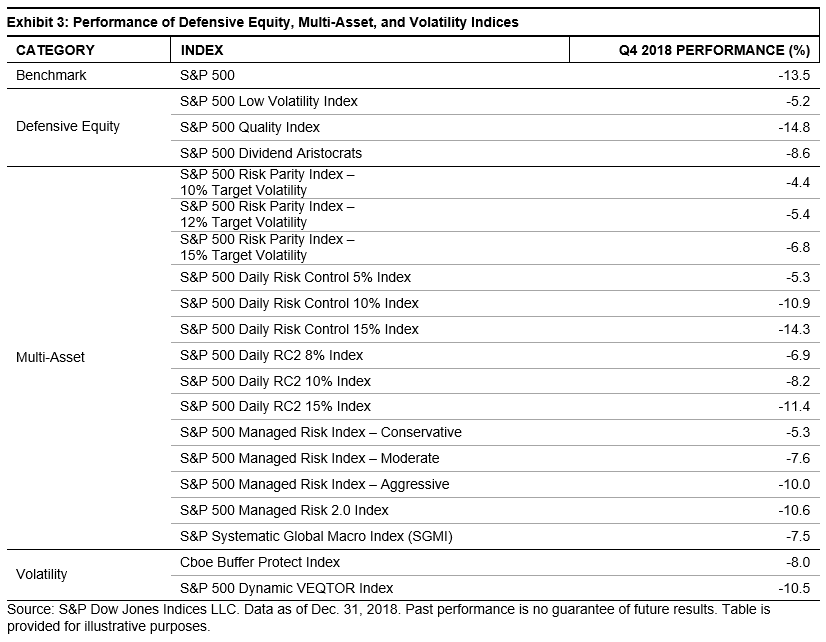Risk-adjusted returns showcase the return accrued for every unit of risk held in a portfolio. If two portfolios have the same returns over a given time period, the one that has the lowest risk will have the better risk-adjusted return. Modern portfolio theory (MPT) assumes that an investment with higher risk should compensate the investor, on average, with higher returns.[1]
In addition to observing the performance of funds purely on a return basis (as seen in the SPIVA® India Year-End 2018 Scorecard), it may also be useful to determine whether funds, adjusting for risk, are able to beat their respective category benchmarks. This analysis seeks to establish whether actively managed funds are able to generate higher risk-adjusted returns than their corresponding benchmarks over long-term investment horizons.
The standard deviation of monthly returns was used as a measure of risk (volatility) for this analysis. We used the return/risk ratio to evaluate managers’ risk-adjusted performance. To make our comparison relevant, we also adjusted the returns of the benchmarks by their volatility.
The analysis resonates the same message that we saw in the SPIVA India Year-End 2018 scorecard (see Exhibits 1a and 1b)—on a risk-adjusted basis, a large proportion of actively managed equity funds underperformed their benchmarks over long-term horizons.
Exhibit 1b shows that adjusting for risk does not necessarily portray a stronger case for active fund managers. For example, in large-cap and Equity-Linked Savings Scheme (ELSS) categories, we can still see that more than 45% of the active fund managers underperformed their respective category benchmarks on a risk-adjusted return basis across different time horizons. However, in the case of the mid-/small-cap segment, active funds fared relatively better; a little more than 50% of funds outperformed the S&P BSE 400 MidSmallCap Index across the 3-, 5-, and 10-year horizons.
| Exhibit 1a: Percentage of Funds Outperformed by the Index (by Returns) | ||||
| FUND CATEGORY | COMPARISON INDEX | 3-YEAR (%) | 5-YEAR (%) | 10-YEAR (%) |
| Indian Equity Large Cap | S&P BSE 100 | 90.59 | 57.55 | 64.23 |
| Indian ELSS | S&P BSE 200 | 88.10 | 40.54 | 51.52 |
| Indian Equity Mid-/Small-Cap | S&P BSE 400 MidSmallCap Index | 56.52 | 39.68 | 55.26 |
Source: S&P Dow Jones Indices LLC, Morningstar, and Association of Mutual Funds in India. Data as of Dec. 31, 2018. Past performance is no guarantee of future results. Table is provided for illustrative purposes.
| Exhibit 1b: Percentage of Funds Outperformed by the Index (by Risk-Adjusted Returns) | ||||
| FUND CATEGORY | COMPARISON INDEX | 3-YEAR (%) | 5-YEAR (%) | 10-YEAR (%) |
| Indian Equity Large Cap | S&P BSE 100 | 92.94 | 60.43 | 55.28 |
| Indian ELSS | S&P BSE 200 | 88.10 | 51.35 | 45.45 |
| Indian Equity Mid-/Small-Cap | S&P BSE 400 MidSmallCap Index | 50.00 | 33.33 | 44.74 |
Source: S&P Dow Jones Indices LLC, Morningstar, and Association of Mutual Funds in India. Data as of Dec. 31, 2018. Past performance is no guarantee of future results. Table is provided for illustrative purposes.
At an aggregate level, the asset-weighted basket of mid-/small-cap active funds witnessed better risk-adjusted returns than the S&P BSE 400 MidSmallCap Index with a notably lower return volatility (see Exhibit 2). On the contrary, large-cap and ELSS active funds noted worse or similar risk-adjusted returns to the S&P BSE 100 and S&P BSE 200 benchmarks, respectively, across different investment horizons. Therefore, one may notice that it is becoming increasingly difficult for fund managers to beat their respective benchmarks both on an absolute return basis and risk-adjusted returns basis.
| Exhibit 2: Risk/Return Characteristics of Asset-Weighted Active Funds versus Category Benchmarks | |||
| INDEX/PEER GROUP | 3-YEAR | 5-YEAR | 10-YEAR |
| ANNUALIZED RETURN (%) | |||
| S&P BSE 100 | 12.8 | 13.6 | 16.1 |
| Indian Equity Large Cap | 10.8 | 14.2 | 15.8 |
| S&P BSE 200 | 12.8 | 14.5 | 16.6 |
| Indian ELSS | 9.5 | 14.9 | 16.9 |
| S&P BSE 400 MidSmallCap Index | 10.5 | 18.8 | 18.4 |
| Indian Equity Mid-/Small-Cap | 9.2 | 18.7 | 19.3 |
| ANNUALIZED VOLATILITY (%) | |||
| S&P BSE 100 | 14.7 | 14.1 | 19.6 |
| Indian Equity Large Cap | 14.8 | 14.5 | 18.2 |
| S&P BSE 200 | 14.8 | 14.2 | 19.7 |
| Indian ELSS | 15.5 | 15.0 | 18.7 |
| S&P BSE 400 MidSmallCap Index | 19.3 | 17.9 | 23.6 |
| Indian Equity Mid-/Small-Cap | 17.1 | 16.3 | 20.7 |
| RISK-ADJUSTED RETURN | |||
| S&P BSE 100 | 0.88 | 0.96 | 0.82 |
| Indian Equity Large Cap | 0.73 | 0.98 | 0.87 |
| S&P BSE 200 | 0.86 | 1.02 | 0.84 |
| Indian ELSS | 0.62 | 0.99 | 0.90 |
| S&P BSE 400 MidSmallCap Index | 0.54 | 1.05 | 0.78 |
| Indian Equity Mid-/Small-Cap | 0.54 | 1.15 | 0.93 |
Source: S&P Dow Jones Indices LLC, Morningstar, and Association of Mutual Funds in India. Data as of Dec. 31, 2018. Past performance is no guarantee of future results. Table is provided for illustrative purposes.
Experience the active vs. passive debate on INDEXOLOGY®.
[1] https://spindices.com/documents/research/research-risk-adjusted-spiva-scorecard.pdf
The posts on this blog are opinions, not advice. Please read our Disclaimers.











































